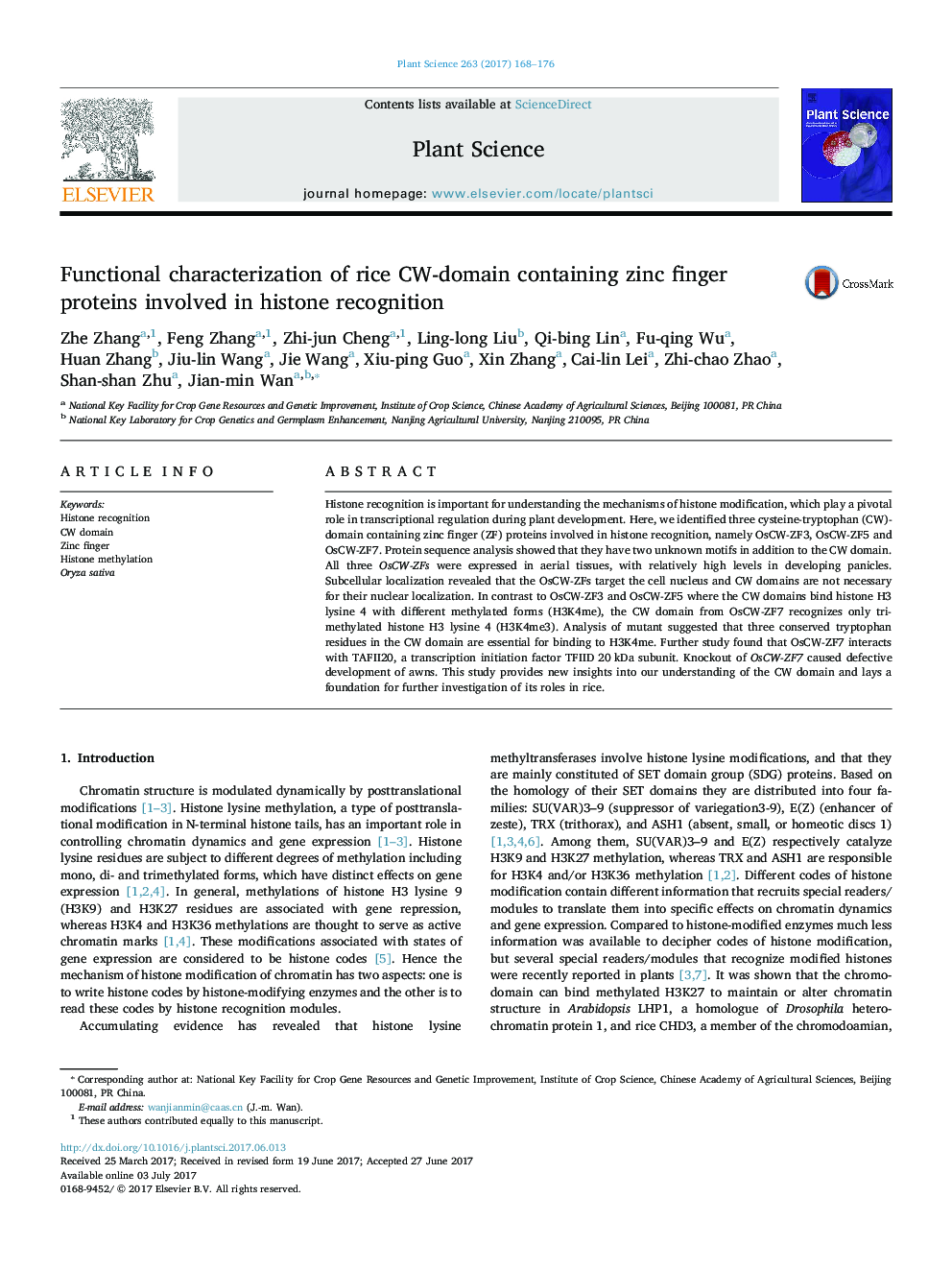| Article ID | Journal | Published Year | Pages | File Type |
|---|---|---|---|---|
| 5515769 | Plant Science | 2017 | 9 Pages |
â¢Three cysteine-tryptophan (CW) âdomain containing zinc finger (ZF) proteins involved in histone recognition were identified from rice genome, viz. OsCW-ZF3, OsCW-ZF5 and OsCW-ZF7.â¢OsCW-ZFs have binding affinity to histone H3K4 with different methylation.â¢OsCW-ZF7 can interact with TAFII20, a transcription initiation factor TFIID 20 kDa subunit.â¢OsCW-ZF7 mutant has awn developmental defects.
Histone recognition is important for understanding the mechanisms of histone modification, which play a pivotal role in transcriptional regulation during plant development. Here, we identified three cysteine-tryptophan (CW)-domain containing zinc finger (ZF) proteins involved in histone recognition, namely OsCW-ZF3, OsCW-ZF5 and OsCW-ZF7. Protein sequence analysis showed that they have two unknown motifs in addition to the CW domain. All three OsCW-ZFs were expressed in aerial tissues, with relatively high levels in developing panicles. Subcellular localization revealed that the OsCW-ZFs target the cell nucleus and CW domains are not necessary for their nuclear localization. In contrast to OsCW-ZF3 and OsCW-ZF5 where the CW domains bind histone H3 lysine 4 with different methylated forms (H3K4me), the CW domain from OsCW-ZF7 recognizes only trimethylated histone H3 lysine 4 (H3K4me3). Analysis of mutant suggested that three conserved tryptophan residues in the CW domain are essential for binding to H3K4me. Further study found that OsCW-ZF7 interacts with TAFII20, a transcription initiation factor TFIID 20Â kDa subunit. Knockout of OsCW-ZF7 caused defective development of awns. This study provides new insights into our understanding of the CW domain and lays a foundation for further investigation of its roles in rice.
